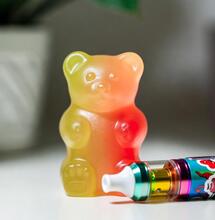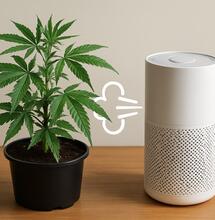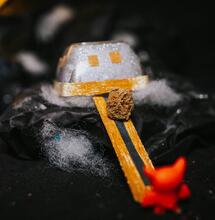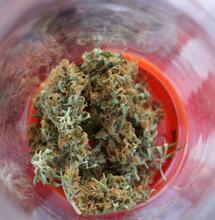How to Make Your Own Cannabis Tincture?
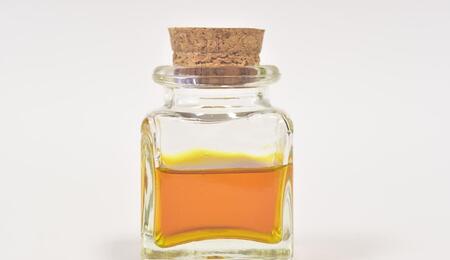
A tincture is basically an alcohol-based extract where cannabis plant material has been soaked into the alcohol to get the concoction. Tinctures are user-friendly way to use cannabis, making it an excellent choice for novice users, including both those who want to try cannabis for therapeutic reasons or use it recreationally. Below get all the answers on how to make your own cannabis tinctures, and how to store it and dose according to your needs.
Cannabis Tinctures Have Been Around for a While Now
The earliest use of cannabis as in tincture has been recorded back in the third century A.D. by Chinese physician Hua T’o. ‘Hemp-boiling-compound’ would be added in wine, and the resulting solution was used as an aesthetic, according to sources.
During the 19th-century, when Western medicine was just starting to discover the therapeutic potential of Cannabis, the plant was also prepared in the form of tincture. Chronicles suggest that even British monarch Queen Victoria, was prescribed a cannabis tincture remedy from her personal physician to treat period cramps. Convulsions and tetanus were as well treated with tinctures at the time.
More than a century later, tinctures have made a grand come back on the cannabis scene. Like other marijuana products, tinctures can be found and purchased in any medical dispensary, or you can easily prepare your own cannabis tincture at home. It’s easy, and it’s rewarding.
Tinctures Are Just a Different Type of Edible
Cannabis tinctures can be ingested under the tongue, put directly on the tongue, or added in drinks and meals. They contain high doses of alcohol, and they usually come in small glass bottles with droppers for easy ingestion in the mouth. This method of supplementing tinctures allows for a very precise dosing.
Tinctures rely on the solvent to get the cannabinoids from the cannabis plant material. That solvent usually is alcohol, but it can also be glycerite. To ensure that THC and other compounds found in cannabis are active, the plant material used for tinctures does need to be decarboxylated.
While tinctures are most often consumed sublingually (applied below the tongue and wait to swallow), they can also be taken orally (place in the mouth and directly swallow), or infused in foods just like cannabis oils. Consuming tinctures below the tongue has the fastest effect - faster than your average space cookie that may take up to 1-2 hours to work around the stomach. After the initial dose, users can quickly tell if they need an upgrade or wait for the next round of droplets.
How to Make Your Own Cannabis Tincture at Home?
Forget cooking butter and making a mess out of your kitchen when you try to bake weed-infused muffins or cakes. Tinctures are easier than that. Besides cannabis and high-quality edible alcohol, all you need is some basic kitchen items.
Stick with food-grade alcohol that is safe for consumption and has sufficient alcohol content when you prepare cannabis tinctures. Resin will better dissolve in high alcohol content. But not isopropyl alcohol, which is unsuitable for consumption and should be saved for cleaning and disinfection.
Another options when preparing tinctures is glycerites. Glycerite is naturally made from plants or sometimes animal fats, and its syrupy odorless quality makes a nice substitute for alcohol. However, glycerite will not bind with cannabis compounds as efficiently as alcohol. As a result, glycerin-based cannabis tinctures turn out less potent.
You can use both glycerite and alcohol to devise a more powerful cannabis tincture. That is, if you truly want to test your chemistry skills. In which case, the first step would be to vaporize the alcohol out of the tincture, and the second - to introduce glycerite in the concoction. However, this process requires advanced skills, and it also requires caution working to evaporate the alcohol, which is a flammable substance. What follows below is the more convenient way to make a simple cannabis tincture solution on your own.
Ingredients and Kitchen Tools:
Here’s a list of items that you will need for preparing your own cannabis tincture:
- 1 ounce of Cannabis flower
- 2 cups of highly-potent, safe-to-consume alcohol (e.g., Everclear, vodka, or brandy)
- Grinder
- Mason jar
- Cheesecloth
- Glass dropper bottles
- Glass measuring cup
- Oven-safe pan
- Aluminum foil
- Plastic gloves
Depending on how strong you want to make the tincture and how much cannabis you set aside for it, duplicate the alcohol dose accordingly (e.g., 2 ounces, 4 cups). For a more potent tincture, decrease the alcohol ratio by a third.
Decarboxylate the Cannabis:
Before you start preparing the tincture, you need to decarboxylate or ‘activate’ the cannabis material you’re going to use. Grind the flower thoroughly and arrange it in a pan. Blanket the pan with aluminum foil to prevent charring the weed. Why do you need to do this? THC is byproduct of heating THCA (Tetrahydrocannabinolic acid). The THC precursor is non-intoxicating, and heat helps to convert it into its mind-altering version. THCA starts to become THC at roughly 220°F, after around half an hour of exposure. But to complete the process, you may want to wait for another hour before removing the pan from the heat.
People have different approaches to decarboxylating. Some prefer to set lower temperatures for heating as this helps preserve terpenes, which are also important to extract, beyond getting THC or CBD. Using lower temperatures extends the time for waiting, however. A tried decarboxylating approach is to preheat the oven to 230°F and expose the weed to heat for slightly less than two hours (105-110 minutes). Decarboxylating is the most challenging step in making your cannabis tincture, but past this point it all gets much easier. Everything else that you want to know about cannabis decarboxylating can be found in this article here.
The Next Steps
Step 1: Take a mason jar filled with the alcohol of your choice and add the decarboxylated weed. The plant matter needs to be entirely immersed in the alcohol.
Step 2: Seal the jar and let it stay like that for a couple of weeks. Shake the concoction once every day. Some sources also suggest placing the jar in the fridge as cold helps produce a finer concoction, but that’s up to you to try.
Step 3: When you’ve had enough of waiting, take a cheesecloth to squeeze the liquid out of the mason jar. Using a glass measuring cup might come in handy to see precisely how much tincture there is. You also want to manually squeeze the plant material at the end and juice out more liquid from the jar. Use gloves to protect your hands while squeezing.
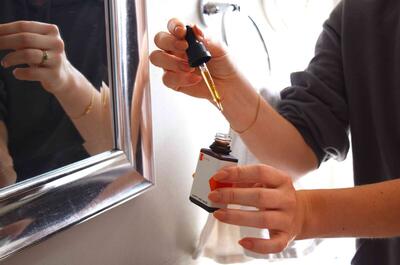
Tincture Storage and Dosing
If you are not going to use your homemade tincture immediately, keep it in a jar for a few more weeks. Otherwise, transfer the tincture into smaller glass dropper bottles, which are ideal for controlling the dosage. Tincture remedies are best stored in cold and dark places. This way, they could last for years. Exposure to heat, light, or air can affect the tincture in negative ways.
Once you’ve purchased or made your own cannabis tincture, test with the doses. Start with little (for example a single drop on the first day) and then gradually increase until reaching a dose that you’re comfortable with. Use the dropper to place the solution under the tongue and wait up to two minutes before swallowing. The tincture should kick in quickly, in about 15-30 minutes. You can also use tincture to infuse meals and snacks, which is basically classic edibles use.
What If You Experience Burning Sensations Under the Tongue?
Some tincture users report that they can sometimes sense burning and itching under the tongue, after taking a few drops of the extract. This is a common reaction because tinctures use high-grade alcohol for preparation. While it’s nothing to worry about, if you want to avoid itching, then it's recommended to ingest the tincture with juice or some other drink, or opt for solutions that have glycerite as a solvent.
What Are the Benefits of Using Tinctures?
Tincture is one of the oldest delivery methods for cannabis, especially in medical practice. These preparations are ideal for non-smokers. The onset is faster than with other edibless and the effect lasts for a convenient amount of time (around four hours). Unlike other cannabis edibles, tinctures are calorie-free (unless they are put into sugary snacks) and they are also very discrete to use.
What’s the Difference Between THC and CBD Tinctures?
There are THC- and CBD-based tinctures, and you can also come across concoctions with both cannabinoids. All tinctures have a medicinal effect, with CBD/hemp normally being the one that doesn’t cause any high.
CBD and THC are subject of different legal treatment, which affects the availability of tinctures. Tinctures that contain over 3% THC can only be legally purchased in legal states. On the other hand, CBD-rich tinctures are easier to come by. However, it is fairly easy to make your own cannabis tincture at home, so you can always give it a try without having to worry if the local dispensary doesn’t have any.
Also read on Soft Secrets:
.jpg)
